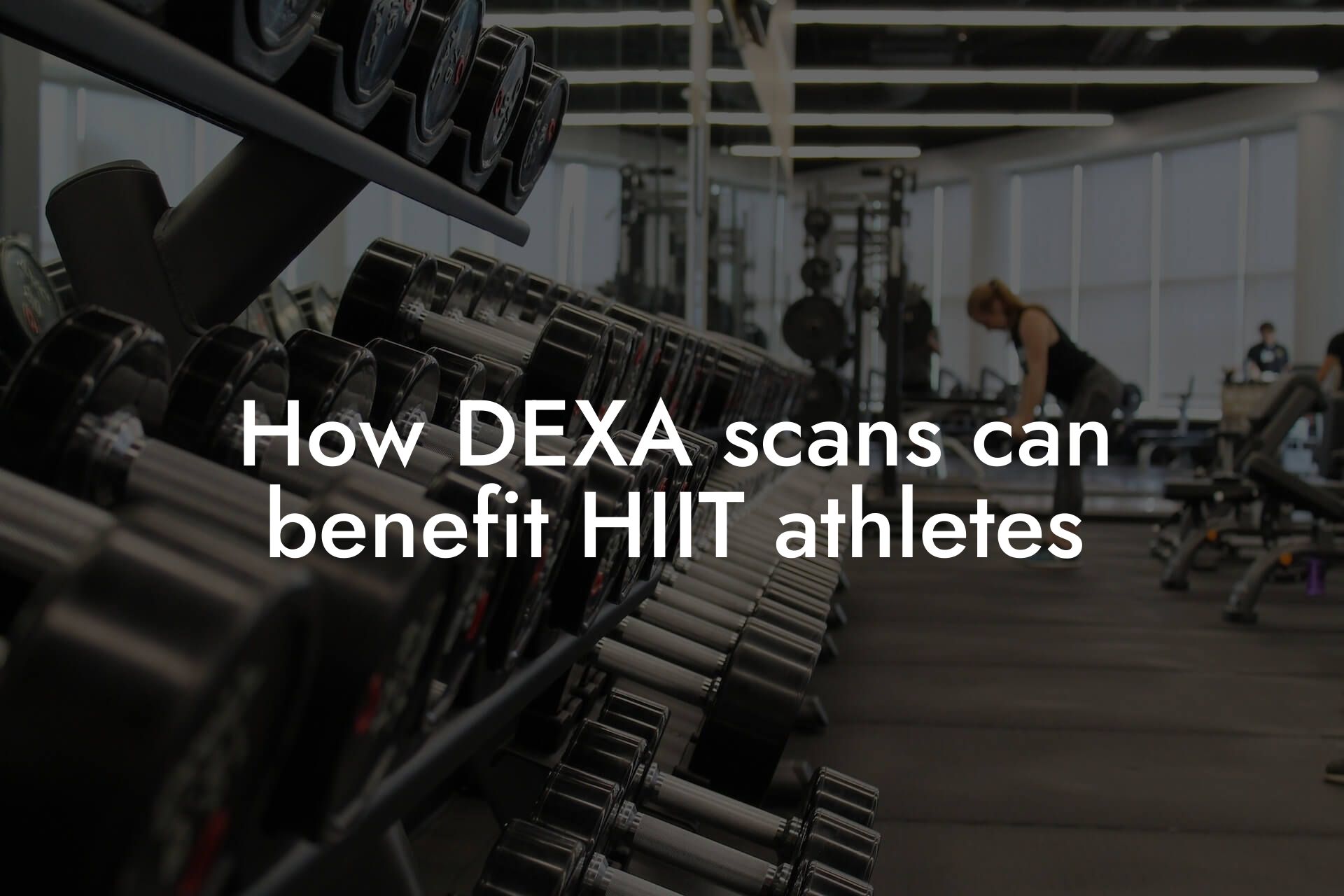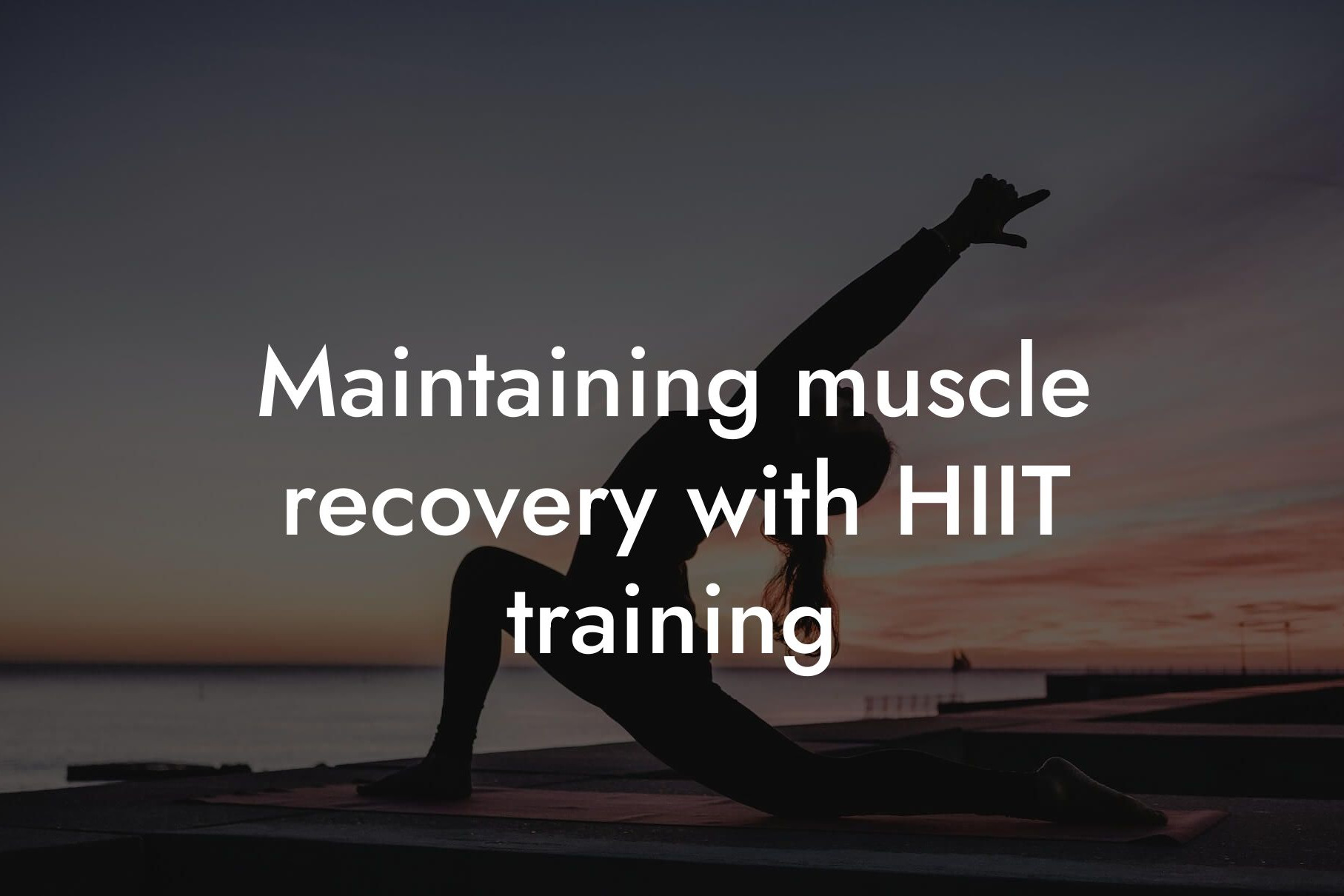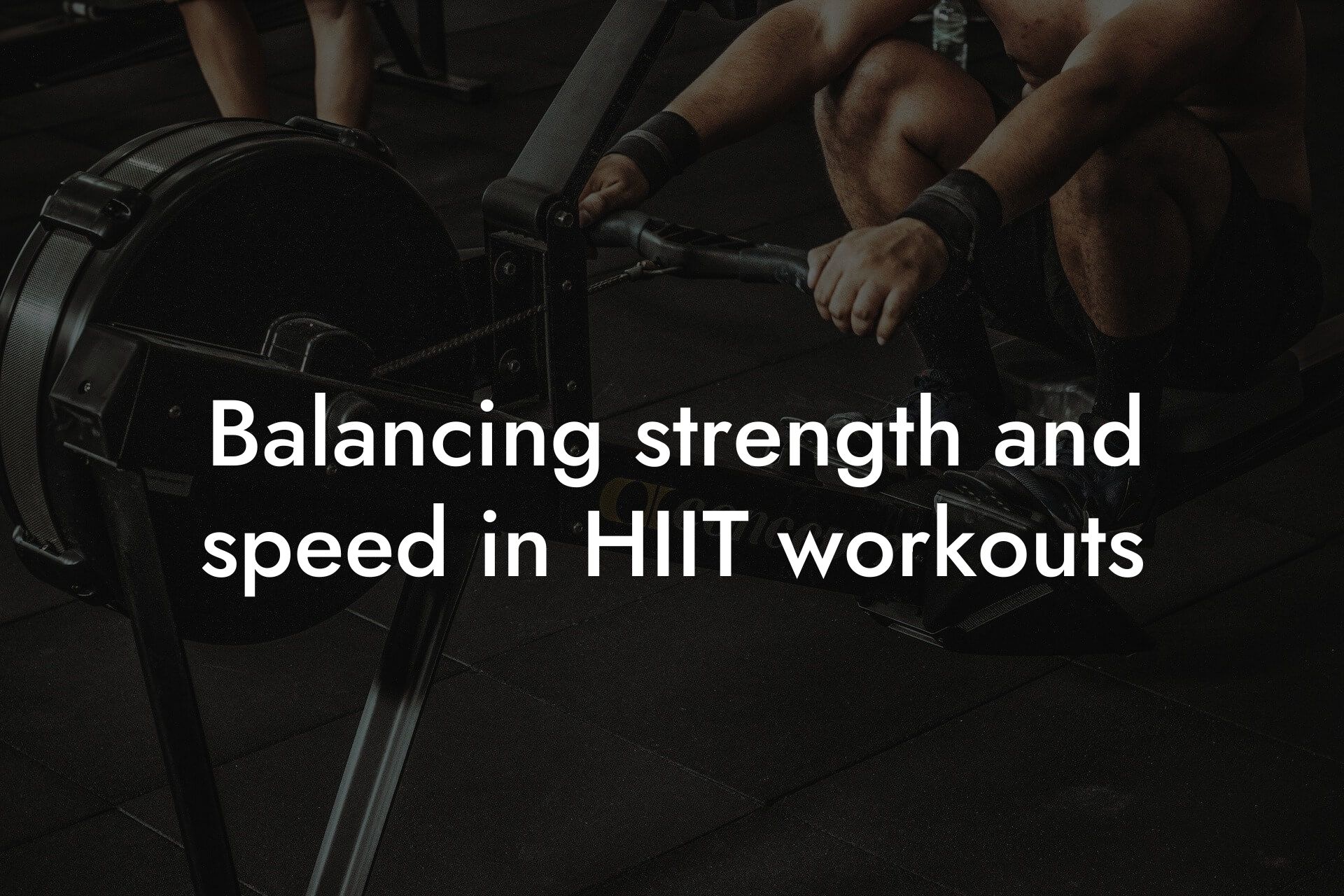As a high-earning professional, you understand the importance of maintaining a healthy and fit physique. Cardiovascular endurance is a crucial aspect of overall fitness, and High-Intensity Interval Training (HIIT) is an effective way to improve it. In this article, we'll delve into the world of HIIT and explore how it can help you achieve your fitness goals.
Table of Contents
- What is HIIT?
- Benefits of HIIT for Cardiovascular Endurance
- How HIIT Improves Cardiovascular Endurance
- Designing a HIIT Workout for Cardiovascular Endurance
- Sample HIIT Workout for Cardiovascular Endurance
- Tips for Incorporating HIIT into Your Busy Schedule
- Monitoring Progress with DEXA Scans
- Frequently Asked Questions
What is HIIT?
HIIT is a type of workout that involves short bursts of high-intensity exercise followed by brief periods of rest or low-intensity exercise. This type of training has gained popularity in recent years due to its ability to improve cardiovascular fitness, increase caloric burn, and enhance overall athletic performance. HIIT workouts typically last between 15-30 minutes, making them an ideal option for busy professionals like yourself.
Benefits of HIIT for Cardiovascular Endurance
HIIT is an excellent way to improve cardiovascular endurance due to its ability to push your heart rate up and down repeatedly. This type of training helps to:
• Increase cardiac output: HIIT strengthens the heart, allowing it to pump more blood with each beat.
• Improve vasodilation: HIIT helps to dilate blood vessels, allowing for increased blood flow and oxygen delivery to the muscles.
• Enhance mitochondrial density: HIIT increases the density of mitochondria in muscle cells, allowing for more efficient energy production.
• Boost aerobic capacity: HIIT improves the body's ability to utilize oxygen during exercise, increasing aerobic capacity.
How HIIT Improves Cardiovascular Endurance
HIIT improves cardiovascular endurance by subjecting the heart and lungs to repeated periods of high-intensity stress. This stress triggers a range of physiological adaptations, including:
• Increased myoglobin levels: HIIT increases the production of myoglobin, a protein that stores oxygen in muscle cells.
• Enhanced capillarization: HIIT promotes the growth of new capillaries, allowing for increased blood flow and oxygen delivery to the muscles.
• Improved mitochondrial function: HIIT increases the efficiency of mitochondrial energy production, allowing for more efficient ATP production.
Designing a HIIT Workout for Cardiovascular Endurance
To design a HIIT workout for cardiovascular endurance, follow these guidelines:
• Choose exercises that work multiple muscle groups at once, such as burpees, jump squats, or mountain climbers.
• Aim for 20-30 seconds of high-intensity exercise followed by 15-30 seconds of rest or low-intensity exercise.
• Repeat for 15-30 minutes, depending on your fitness level and goals.
• Incorporate a mix of aerobic and anaerobic exercises to challenge your cardiovascular system.
Sample HIIT Workout for Cardiovascular Endurance
Here's a sample HIIT workout to get you started:
• Warm-up: 5 minutes of light cardio (jogging, jumping jacks, etc.)
• Sprints: 30 seconds of all-out sprinting followed by 15 seconds of rest. Repeat for 10 rounds.
• Burpees: 30 seconds of burpees followed by 15 seconds of rest. Repeat for 10 rounds.
• Jump squats: 30 seconds of jump squats followed by 15 seconds of rest. Repeat for 10 rounds.
• Mountain climbers: 30 seconds of mountain climbers followed by 15 seconds of rest. Repeat for 10 rounds.
• Cool-down: 5 minutes of stretching and foam rolling.
Tips for Incorporating HIIT into Your Busy Schedule
As a high-earning professional, you know how valuable your time is. Here are some tips for incorporating HIIT into your busy schedule:
• Wake up 30 minutes earlier and fit in a quick HIIT workout before starting your day.
• Use a lunch break to fit in a HIIT workout at the gym or in a nearby park.
• Try bodyweight exercises that can be done in the comfort of your own home or office.
• Invest in a fitness tracker or smartwatch that allows you to track your progress and stay motivated.
Monitoring Progress with DEXA Scans
At Tano Performance Group, we understand the importance of tracking progress and making data-driven decisions. Our DEXA scans provide a comprehensive body assessment, giving you valuable insights into your body composition, bone density, and overall fitness. By incorporating HIIT into your workout routine and tracking your progress with DEXA scans, you'll be able to see the tangible results of your hard work and make adjustments to optimize your fitness journey.
Improving cardiovascular endurance with HIIT is a powerful way to take your fitness to the next level. By incorporating HIIT into your workout routine and tracking your progress with DEXA scans, you'll be able to achieve your fitness goals and maintain a healthy, fit physique. Remember to start slowly, listen to your body, and push yourself to new heights. With HIIT and DEXA scans, you'll be unstoppable.
Frequently Asked Questions
What is HIIT and how does it improve cardiovascular endurance?
HIIT stands for High-Intensity Interval Training, a type of workout that involves short bursts of high-intensity exercise followed by brief periods of rest or low-intensity exercise. This type of training has been shown to significantly improve cardiovascular endurance by increasing heart rate and blood flow, as well as strengthening the heart and lungs.
How does HIIT differ from traditional cardio workouts?
HIIT workouts are typically shorter in duration and more intense than traditional cardio workouts, which can be longer and more steady-state. HIIT workouts are designed to push your body to its limits, whereas traditional cardio workouts may be more focused on maintaining a steady pace. This intensity and variation in HIIT workouts can lead to greater improvements in cardiovascular endurance.
What are the benefits of improving cardiovascular endurance?
Improving cardiovascular endurance can have numerous benefits, including increased energy levels, improved overall health, and enhanced athletic performance. It can also reduce the risk of chronic diseases, such as heart disease and diabetes, and improve mental health and mood.
Is HIIT suitable for beginners?
While HIIT can be challenging, it's definitely suitable for beginners. Start with shorter intervals and gradually increase the duration and intensity as you become more comfortable. It's also essential to listen to your body and rest when needed. Remember, the goal is to challenge yourself, not to push yourself too hard.
How often should I do HIIT workouts?
Aim to do HIIT workouts 2-3 times per week, with at least one day of rest in between. This allows your body to recover and adapt to the demands of the workout. As you get more comfortable, you can increase the frequency or intensity of your workouts.
What types of exercises are typically used in HIIT workouts?
HIIT workouts can incorporate a variety of exercises, including sprints, burpees, jump squats, mountain climbers, and more. The key is to choose exercises that are high-intensity and get your heart rate up quickly. You can also incorporate strength training exercises, such as squats and lunges, to add an extra challenge.
Do I need any special equipment for HIIT workouts?
No, you don't need any special equipment for HIIT workouts. Bodyweight exercises are a great way to get started, and you can always add weights or resistance bands as you progress. If you're working out at home, you can use household items, such as stairs or a jump rope, to add variety to your workout.
How long does a typical HIIT workout last?
A typical HIIT workout can last anywhere from 15-30 minutes, depending on the intensity and duration of the intervals. Some workouts may be shorter, while others may be longer. The key is to find a duration that works for you and your schedule.
Can I do HIIT workouts at home?
Absolutely! HIIT workouts can be done anywhere, whether it's at home, in a gym, or outdoors. You can find plenty of HIIT workouts online, or create your own using bodyweight exercises and household items.
How do I know if I'm doing HIIT correctly?
To ensure you're doing HIIT correctly, focus on the intensity and duration of your intervals. Aim to work at maximum intensity during the high-intensity intervals, and rest or recover during the low-intensity intervals. Also, listen to your body and adjust the workout as needed.
What are some common mistakes people make when doing HIIT workouts?
Common mistakes people make when doing HIIT workouts include not warming up properly, not cooling down, and pushing themselves too hard. It's essential to listen to your body and adjust the workout as needed. Additionally, make sure to focus on proper form and technique to avoid injury.
Can I do HIIT workouts with a partner or group?
Yes, you can definitely do HIIT workouts with a partner or group! Having a workout buddy or joining a fitness group can provide motivation and accountability. You can also compete with each other to push yourselves harder and achieve greater results.
How does HIIT improve mental health and mood?
HIIT workouts can improve mental health and mood by releasing endorphins, also known as "feel-good" hormones. This can help reduce stress and anxiety, improve sleep quality, and boost overall mood. Additionally, the sense of accomplishment and confidence that comes with completing a HIIT workout can have a positive impact on mental health.
Can I do HIIT workouts with injuries or chronic conditions?
If you have an injury or chronic condition, it's essential to consult with a healthcare professional before starting any new exercise program, including HIIT. They can help you modify the workout to accommodate your needs and abilities. Additionally, focus on low-impact exercises and avoid any movements that exacerbate the injury or condition.
How does HIIT impact bone density?
HIIT workouts can have a positive impact on bone density, particularly in older adults. The high-intensity nature of HIIT can help stimulate bone growth and density, reducing the risk of osteoporosis and fractures.
Can I do HIIT workouts during pregnancy?
If you're pregnant, it's essential to consult with a healthcare professional before starting any new exercise program, including HIIT. They can help you modify the workout to accommodate your needs and abilities. Additionally, focus on low-impact exercises and avoid any movements that may put excessive strain on the joints.
How does HIIT impact body fat percentage?
HIIT workouts can help reduce body fat percentage by increasing metabolism and burning calories both during and after the workout. Additionally, the high-intensity nature of HIIT can help build muscle mass, which can further contribute to fat loss.
Can I do HIIT workouts as I age?
Absolutely! HIIT workouts can be modified to accommodate any age or fitness level. As you age, it's essential to focus on low-impact exercises and avoid any movements that may put excessive strain on the joints. Additionally, consult with a healthcare professional before starting any new exercise program.
How does HIIT impact overall physical appearance?
HIIT workouts can have a significant impact on overall physical appearance, particularly when combined with a healthy diet. The high-intensity nature of HIIT can help build muscle mass, reduce body fat percentage, and improve overall physique.
Can I do HIIT workouts with a busy schedule?
Yes, you can definitely do HIIT workouts with a busy schedule! HIIT workouts are often shorter in duration, making them a great option for those with limited time. You can also break up the workout into smaller intervals throughout the day, or find a workout that can be done in as little as 10-15 minutes.
How does HIIT impact athletic performance?
HIIT workouts can significantly improve athletic performance by increasing speed, agility, and endurance. The high-intensity nature of HIIT can also help improve power and strength, making it an ideal training method for athletes.
What are some common myths about HIIT workouts?
Common myths about HIIT workouts include the idea that you need to be extremely fit to do HIIT, or that HIIT is only for young people. The truth is, HIIT can be modified to accommodate any fitness level or age, and is an effective training method for anyone looking to improve cardiovascular endurance and overall fitness.
Here are some related articles you might love...
- How DEXA scans can benefit HIIT athletes
- Maintaining muscle recovery with HIIT training
- Balancing strength and speed in HIIT workouts
- The role of body composition in HIIT performance
- The importance of bone density in HIIT fitness
- Strength training tips to enhance HIIT performance
- Reducing body fat for better HIIT workout results
- Preventing injuries during HIIT sessions
- Nutrition strategies for HIIT enthusiasts
Zak Faulkner
Zak Faulkner is a leading authority in the realm of physical health and body composition analysis, with over 15 years of experience helping professionals optimise their fitness and well-being. As one the experts behind Tano Performance Group, Zak has dedicated his career to providing in-depth, science-backed insights that empower clients to elevate their physical performance and overall health.
With extensive knowledge of DEXA technology, Zak specializes in delivering comprehensive body assessments that offer precise data on body fat, muscle mass, bone density, and overall physique. His expertise enables individuals to make informed decisions and achieve their fitness goals with accuracy and confidence. Zak’s approach is rooted in a deep understanding of human physiology, combined with a passion for helping clients unlock their full potential through personalised strategies.
Over the years, Zak has earned a reputation for his commitment to excellence, precision, and client-focused service. His guidance is trusted by top professionals who demand the best when it comes to their health. Whether advising on fitness programs, nutritional strategies, or long-term wellness plans, Zak Faulkner’s insights are a valuable resource for anyone serious about taking their health and fitness to the next level.
At Tano Performance Group, Zak continues to lead our Content Team revolutionising how professionals approach their physical health, offering unparalleled expertise that drives real results.




